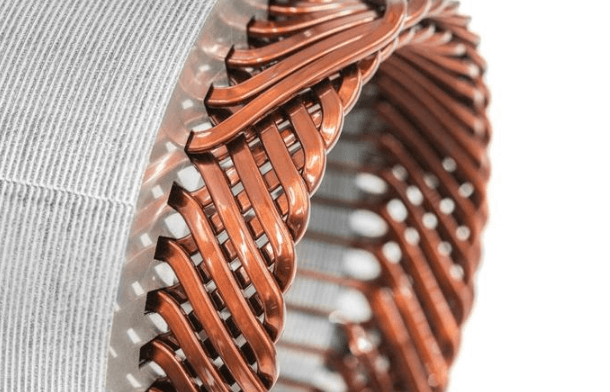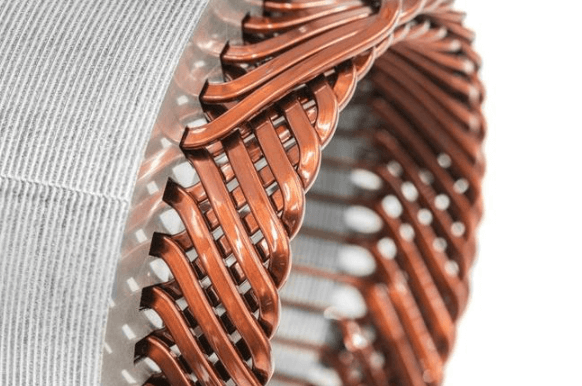
News Center
FAQ about Non-Cutting Hairpin Stator Twisting Machine
Published on.
2025-04-06 11:24
Source
Since HONEST Automation launched its self-developed non-cutting hairpin stator twisting machine, it has received much positive feedback and technical consultation from industry customers. To help everyone understand this breakthrough technology more comprehensively, we have compiled the 10 most concerning core questions and answers in market feedback, from technical principles to actual benefits, to provide professional answers and valuable references for your purchasing decision.

Question 1:
What is the “no-cutting hairpin stator twisting machine” technology? What are its advantages over traditional processes?
Answer:
Non-cutting hairpin stator twisting technology refers to the direct twisting of copper wires through precision servo control and multi-axis linkage system, without cutting the copper wires.
Compared with the traditional twisting and cutting process, the new non-cutting flat twisting machine adopts a full motor drive mode, which can improve the working efficiency of the equipment and reduce the equipment failure rate. At the same time, every two layers of twisted wires share Z-axis data, which is not limited by the number of product slots and layers, and is compatible with Hair-pin, X-pin, Mini-pin and other products.
Question 2:
In terms of improving efficiency, what are the specific advantages of full electronic control design compared to pneumatic control?
Answer:
The fully electronic control design avoids the problems of gas leakage and unstable air pressure that may occur in pneumatic control components. Pneumatic control takes a certain amount of time in the process of gas transmission and pressure regulation. The fully electronic control design has a faster response speed, can achieve more precise motion control, reduce the waiting time during equipment operation, greatly improve production efficiency, and reduce equipment downtime caused by pneumatic component failure, improving the overall operation stability of the equipment.
Question 3:
When the equipment is compatible with Hair-pin, X-pin, and Mini-pin products, how do the twisting parameter settings of different products achieve automatic switching?
Answer:
The equipment reads the RFID information of the pallet at the transport position and uses the laser displacement sensor to read and determine the stator thickness to identify the product type. The equipment also presets wire twisting programs corresponding to different products. The system automatically calls the corresponding program based on the identification results, switches the wire twisting parameters, and realizes automatic control of the wire twisting process, eliminating the need for manual parameter adjustment and reducing manual operation errors.
Question 4:
During the equipment accuracy calibration process, what should be done if it is found that the accuracy deviation of a key component exceeds the adjustable range?
Answer:
If the accuracy deviation of key components exceeds the adjustment range, the component will be fully inspected first to determine whether it is caused by wear, looseness or other reasons. If it is just a loose component, it can be solved by tightening, reinstalling, etc. If the accuracy problem is caused by wear or damage, new components will be replaced in time and high-precision calibration will be performed again to ensure that the overall accuracy of the equipment returns to normal.
Question 5:
During equipment maintenance, the parts are connected by locking from top to bottom. Will this increase the difficulty during the assembly process?
Answer:
In the early stage of equipment assembly, the method of locking from top to bottom may be slightly more complicated than the conventional method, because it needs to be operated from the top, which has certain requirements for assembly space and operation angle. However, from the perspective of long-term maintenance, this method greatly facilitates disassembly.
Moreover, during assembly, the difficulty of operation can be effectively reduced by rationally planning the assembly process. At the same time, this design will gradually reduce the difficulty of assembly in mass production assembly through standardized operation procedures and training, and the overall advantages outweigh the disadvantages.
Question 6:
In terms of improving production efficiency, how are unnecessary and useless waiting action programs optimized?
Answer:
When we deeply analyze the operation process of the equipment, we use motion control algorithms and time management systems to accurately identify unnecessary and useless waiting actions. For example, in the traditional process, after the pallet is transferred from the double-speed chain to the handling position, there will be a short waiting positioning action. Now, by optimizing the program logic, the positioning action and the information reading action are processed in parallel. When the pallet is transferred to the right place, the positioning and information reading are completed synchronously, reducing unnecessary waiting time, making the overall operation rhythm of the equipment more compact, and thus improving production efficiency.
Question 7:
How does the new non-cutting hairpin stator twisting machine ensure the uniformity of the stator end without cutting the copper wire?
Answer:
The copper wire tension is dynamically adjusted through high-precision sensors to avoid twisting and deformation. At the same time, the position of the copper wire is scanned in real time during the twisting process, and the machine automatically stops for correction when the error exceeds 0.1mm.
Question 8:
How long does it take to change the equipment model? Will it affect small batch production?
Answer:
The equipment adopts modular quick-change design, and the standard mold change time can be controlled within 15 minutes. The key workstations are equipped with automatic positioning fixtures and parameter memory functions, and the corresponding process program can be automatically retrieved by scanning the product QR code. It is also equipped with an offline pre-adjustment workstation, which can complete the mold preheating and program verification of the next model during production, achieving zero downtime for mold change, which is particularly suitable for the needs of multi-variety small-batch production, and the mold change process has no significant impact on production capacity.
Question 9:
Is there an upper limit on the number of slots and layers in twisted wire products? Will too many affect product performance?
Answer:
Currently, most products on the market are 6/8/10-layer products, and most have 48/54/72 and 96 slots. Most products of the same type are compatible, and different types of products depend on whether the strength and space of the equipment are met.
Question 10:
Can the product quality be guaranteed if the wires are directly welded after twisting and the flattening process is skipped? How is the stability in long-term use?
Answer:
The assurance of product quality is based on the stability of customer materials and equipment. Now the turning angle, welding end height and radial outer diameter of each layer of our equipment after turning are within the range required by customers and can meet customer expectations.

Regarding this new non-cutting hairpin stator twisting machine, customers' questions cover all aspects from working principle to future development. With the in-depth understanding and practical application of it, these questions will gradually be answered, and it will also play an important role in the new energy flat wire motor manufacturing industry and promote the continuous development of the industry.
If you are looking for a flat wire motor stator production equipment that can improve production efficiency, reduce costs and ensure product quality, this non-cutting flat wire twisting machine is undoubtedly a choice worthy of serious consideration. We suggest that you further communicate with our technical team to deeply understand the details of the equipment and practical application cases, so as to bring greater value and competitiveness to your company.
Related News






